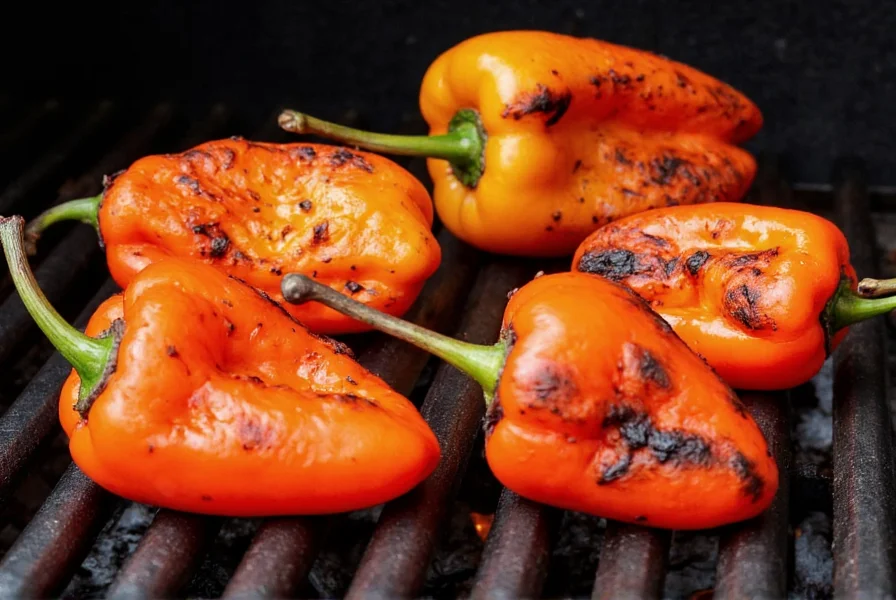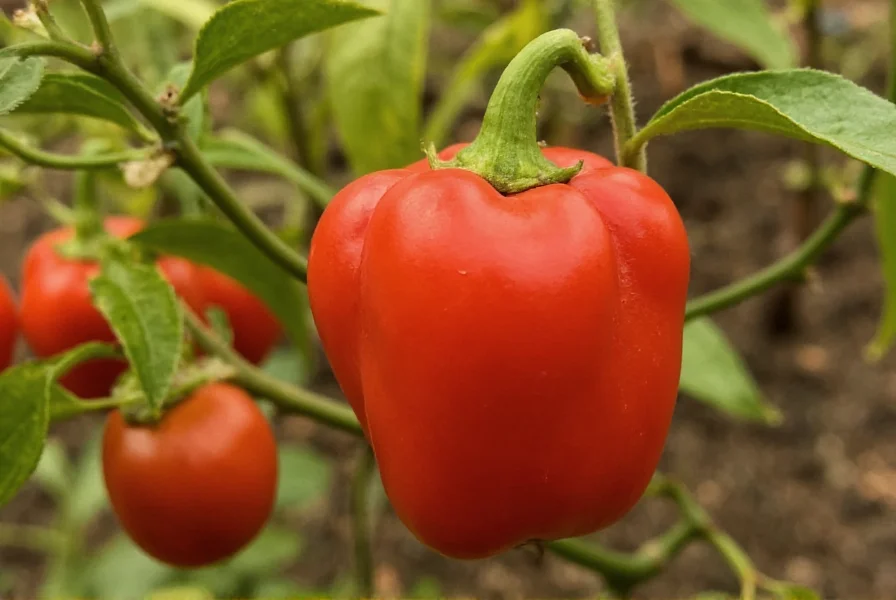Discover why gypsy peppers have become a favorite among home gardeners and chefs seeking versatile, flavorful sweet peppers. This comprehensive guide explores everything you need to know about cultivating, identifying, and using these unique vegetables that bridge the gap between standard bell peppers and more exotic varieties.
What Exactly Is a Gypsy Pepper?
Gypsy peppers (Capsicum annuum 'Gypsy') represent a distinctive sweet pepper variety developed specifically for home gardeners and culinary enthusiasts. Unlike standard bell peppers with their blocky shape, gypsy peppers feature a tapered, slightly curved form that resembles a traditional "pepper" shape. These medium-sized peppers typically measure 6-8 inches in length and 2-3 inches in diameter at their widest point.

One of the most valuable characteristics of gypsy peppers is their early maturity. While most sweet peppers require 70-90 days to reach harvest, gypsy peppers often mature in just 55-65 days from transplanting. This makes them particularly valuable in regions with shorter growing seasons. Their thin walls distinguish them from standard bell peppers, resulting in a more tender texture that's ideal for quick cooking methods.
Flavor Profile and Heat Level
When addressing the common question are gypsy peppers hot, the answer is a definitive no. These peppers register between 0-500 Scoville Heat Units (SHU), placing them firmly in the sweet pepper category. For comparison, standard bell peppers measure 0 SHU, while jalapeños range from 2,500-8,000 SHU.
| Pepper Variety | Scoville Heat Units | Flavor Characteristics |
|---|---|---|
| Gypsy Pepper | 0-500 | Sweet with subtle earthy notes, minimal bitterness |
| Bell Pepper | 0 | Crisp sweetness, sometimes slightly grassy |
| Poblano | 1,000-2,000 | Mild heat with rich, almost chocolatey notes |
The flavor profile of gypsy peppers offers a more complex sweetness compared to standard bell peppers. Many gardeners and chefs describe them as having subtle earthy notes with less bitterness than some bell pepper varieties. This nuanced flavor makes them particularly valuable for dishes where pepper flavor plays a starring role rather than just providing texture.
Gypsy Pepper vs Bell Pepper: Key Differences
Understanding the differences between gypsy peppers and bell peppers helps explain why many gardeners choose gypsy peppers despite bell peppers' widespread availability:
- Shape: Gypsy peppers have a tapered, slightly curved shape while bell peppers are blocky and square
- Wall Thickness: Gypsy peppers have noticeably thinner walls, making them more tender when cooked
- Maturity Time: Gypsy peppers mature significantly faster (55-65 days vs 70-90+ days)
- Flavor Complexity: Gypsy peppers offer more nuanced sweetness with subtle earthy notes
- Seed Cavity: Gypsy peppers have fewer seeds and a smaller seed cavity
These differences make gypsy peppers particularly valuable for specific culinary applications where bell peppers might become too soft or lack sufficient flavor complexity.
Culinary Applications and Recipe Ideas
The thin walls and tender texture of gypsy peppers make them exceptionally versatile in the kitchen. Unlike thicker-walled bell peppers that can remain crunchy when lightly cooked, gypsy peppers soften beautifully while maintaining their shape. This quality makes them ideal for:
- Stir-fries where quick cooking is essential
- Stuffed pepper recipes (their tapered shape creates a natural cup)
- Roasting and grilling (they caramelize beautifully)
- Fresh applications like salads and crudités
- Pickling (their tender texture absorbs flavors well)
When exploring how to use gypsy peppers in cooking, consider substituting them for bell peppers in any recipe where you want enhanced flavor without heat. Their early harvest window means you can enjoy homegrown sweet peppers weeks before standard bell peppers are ready.

Growing Gypsy Peppers: Essential Tips
For gardeners interested in gypsy pepper growing tips, these plants offer several advantages. They're relatively compact (typically 18-24 inches tall), making them suitable for container gardening. Like all peppers, they require full sun (at least 6-8 hours daily) and well-draining soil rich in organic matter.
One of the most valuable gypsy pepper plant care practices involves consistent watering. Peppers prefer evenly moist (but not soggy) soil. Mulching helps maintain consistent soil moisture and temperature. Unlike some pepper varieties, gypsy peppers don't require extensive pruning, though removing the first few flowers can encourage stronger plant development.
Understanding when to harvest gypsy peppers depends on your flavor preference. Most gardeners harvest them when they're predominantly green with possible yellow streaks for a crisp, fresh flavor. Allowing them to fully ripen to red develops a sweeter, more complex flavor but takes longer. The peppers should feel firm and have smooth, glossy skin when ready for harvest.
Nutritional Benefits and Storage
Gypsy peppers offer similar nutritional benefits to other sweet peppers, being excellent sources of vitamin C and vitamin A. A single medium gypsy pepper provides approximately 150% of the recommended daily intake of vitamin C. They also contain significant amounts of vitamin B6, potassium, and dietary fiber.
For optimal storage, keep harvested gypsy peppers in the crisper drawer of your refrigerator. They'll maintain quality for 1-2 weeks when stored this way. Unlike thicker-walled peppers, their thin walls make them less suitable for long-term storage. For best flavor, use them within a week of harvest.
Frequently Asked Questions
Are gypsy peppers the same as bell peppers?
No, gypsy peppers differ from bell peppers in several key ways. While both are sweet pepper varieties, gypsy peppers have a tapered shape rather than the blocky form of bell peppers. They also feature thinner walls, mature earlier (55-65 days vs 70-90+ days), and offer a more complex flavor profile with subtle earthy notes. Their smaller seed cavity and fewer seeds make them particularly suitable for stuffing recipes.
How hot are gypsy peppers on the Scoville scale?
Gypsy peppers register between 0-500 Scoville Heat Units (SHU), placing them firmly in the sweet pepper category. This means they contain no significant heat and are comparable to standard bell peppers in terms of spiciness. For reference, jalapeños range from 2,500-8,000 SHU, making gypsy peppers at least five times milder than even the mildest jalapeño.
Can you eat gypsy peppers raw?
Yes, gypsy peppers are excellent eaten raw. Their thin walls and tender texture make them particularly enjoyable in fresh applications like salads, crudités, and sandwiches. Many people prefer them raw over standard bell peppers because they lack the occasional bitterness found in some bell pepper varieties. The raw flavor is sweet with subtle earthy notes that complement other fresh ingredients beautifully.
What's the best way to grow gypsy peppers in containers?
Gypsy peppers thrive in containers due to their relatively compact size (18-24 inches tall). Use a 5-gallon container with excellent drainage, filled with high-quality potting mix amended with compost. Place in full sun (6-8 hours daily) and maintain consistent moisture—container plants dry out faster than garden beds. Feed every 2-3 weeks with a balanced organic fertilizer. Container-grown gypsy peppers often produce earlier than garden-planted ones due to warmer root zones.
How do you know when to harvest gypsy peppers?
Harvest gypsy peppers when they feel firm and have smooth, glossy skin. Most gardeners pick them when predominantly green with possible yellow streaks for a crisp, fresh flavor. If you prefer sweeter peppers, allow them to fully ripen to red, which develops more complex sugars. Unlike thicker-walled peppers, gypsy peppers don't store well long-term, so harvest when ready and use within a week for best flavor and texture.











 浙公网安备
33010002000092号
浙公网安备
33010002000092号 浙B2-20120091-4
浙B2-20120091-4